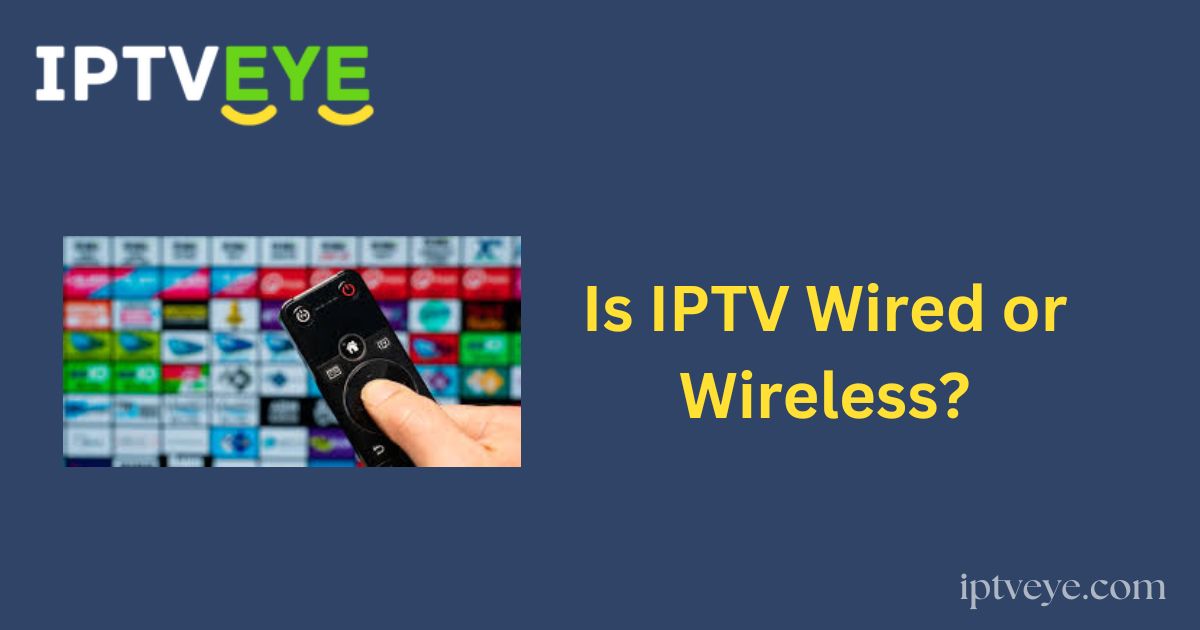IPTV (Internet Protocol Television) can be delivered via both wired and wireless connections. The choice between these methods depends on the user’s preferences, the home network environment, and the service provider’s setup.
More Info : Best IPTV Services
Overview
Users have the flexibility to choose between a wired or wireless connection for accessing IPTV services. Some opt for the stability of a wired setup, while others prefer the convenience of wireless connectivity. Both options have their own advantages and considerations.
Wired IPTV Setup
Ethernet-Based Connection (LAN)
A wired IPTV setup typically utilizes an Ethernet cable to establish a direct connection between the IPTV device (such as a smart TV or set-top box) and the internet. This approach offers a stable, high-speed connection ideal for streaming high-definition or 4K content.
Key Components of Wired IPTV:
-
Cabling Infrastructure:
An Ethernet cable connects the IPTV device to the home router or modem, ensuring minimal data loss and high transfer speeds. -
High Data Transfer Rates:
Ethernet cables (Cat5e, Cat6, or Cat6a) provide high bandwidth and low latency, reducing buffering and ensuring smooth video playback. -
Reliability:
Wired connections are less susceptible to interference and offer consistent performance, making them ideal for uninterrupted IPTV streaming. -
Router or Modem Integration:
The Ethernet cable links the IPTV device to the router or modem, which in turn connects to the internet and manages network traffic. -
Quality of Service (QoS):
Routers with QoS capabilities can prioritize IPTV traffic, improving streaming quality by reducing lag or disruptions. -
IPTV Device Compatibility:
Most set-top boxes and smart TVs come with built-in Ethernet ports to support wired connections.
Wireless IPTV Setup
Wi-Fi-Based Connection
Wireless IPTV setups rely on Wi-Fi to connect the IPTV device to the internet. This method offers greater flexibility in device placement and reduces cable clutter. However, wireless performance may vary depending on signal strength and network interference.
Key Components of Wireless IPTV:
-
Wireless Router:
The Wi-Fi router creates a wireless network that IPTV devices can connect to, typically using either the 2.4 GHz or 5 GHz frequency bands. -
Wi-Fi Standards:
Modern routers support standards such as 802.11n, 802.11ac, and 802.11ax (Wi-Fi 6), offering improved speed, range, and reliability. -
Frequency Bands:
-
2.4 GHz: Offers broader range but lower speed.
-
5 GHz: Offers higher speeds and is less prone to interference, ideal for streaming.
-
-
IPTV Device with Wi-Fi Capability:
Devices such as smart TVs and compatible set-top boxes often have built-in Wi-Fi adapters for seamless wireless connectivity. -
Internet Speed Requirements:
To stream HD or UHD content wirelessly, users need a robust internet connection—typically 25 Mbps or higher for 4K streaming. -
Quality of Service (QoS):
Routers with QoS settings can optimize performance by prioritizing IPTV data over other internet traffic. -
Wireless Interference Considerations:
Signal strength may be impacted by physical obstructions or interference from other devices. Optimal router placement can mitigate these issues. -
Mesh Wi-Fi Systems:
In larger homes, mesh systems can extend Wi-Fi coverage and eliminate dead zones, ensuring a more stable IPTV connection.
Conclusion
IPTV services can be accessed through both wired and wireless connections, each offering unique advantages:
-
Wired connections are ideal for users prioritizing reliability and high performance, especially when streaming HD or 4K content.
-
Wireless connections offer flexibility and convenience, making them suitable for users who value mobility and minimal cabling.
Ultimately, the best choice depends on the user’s environment, internet speed, and personal preferences.
